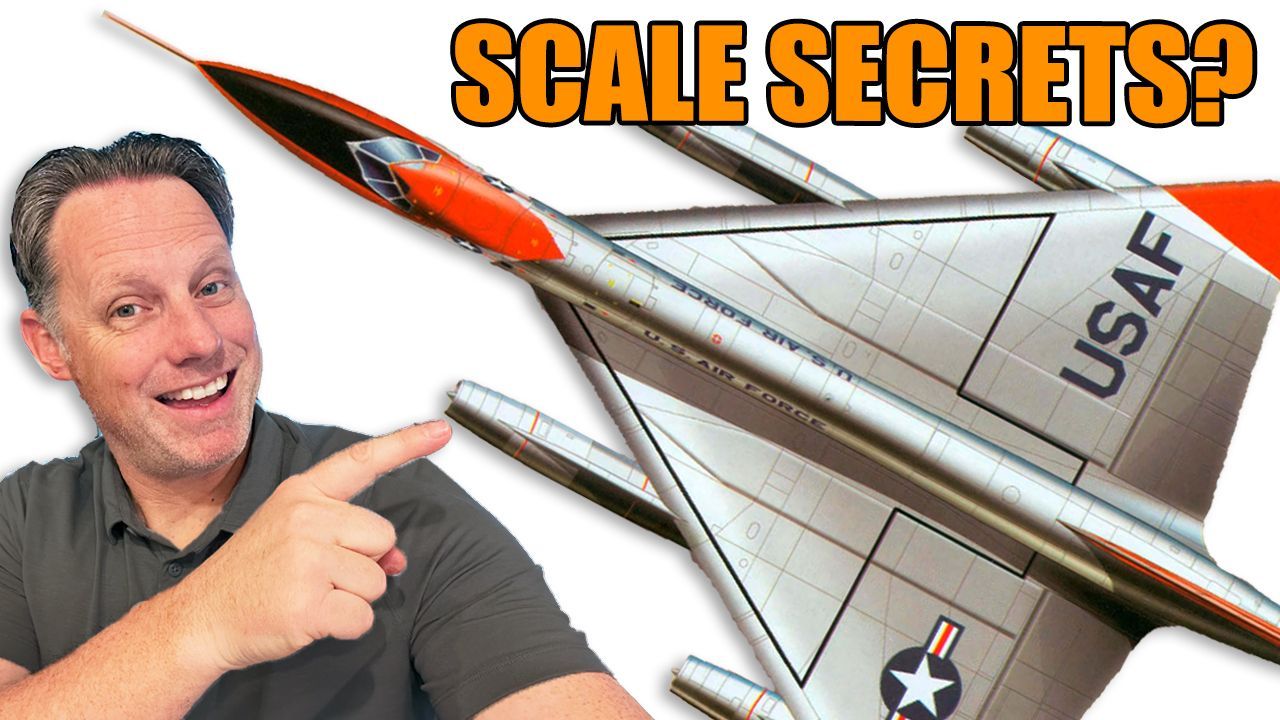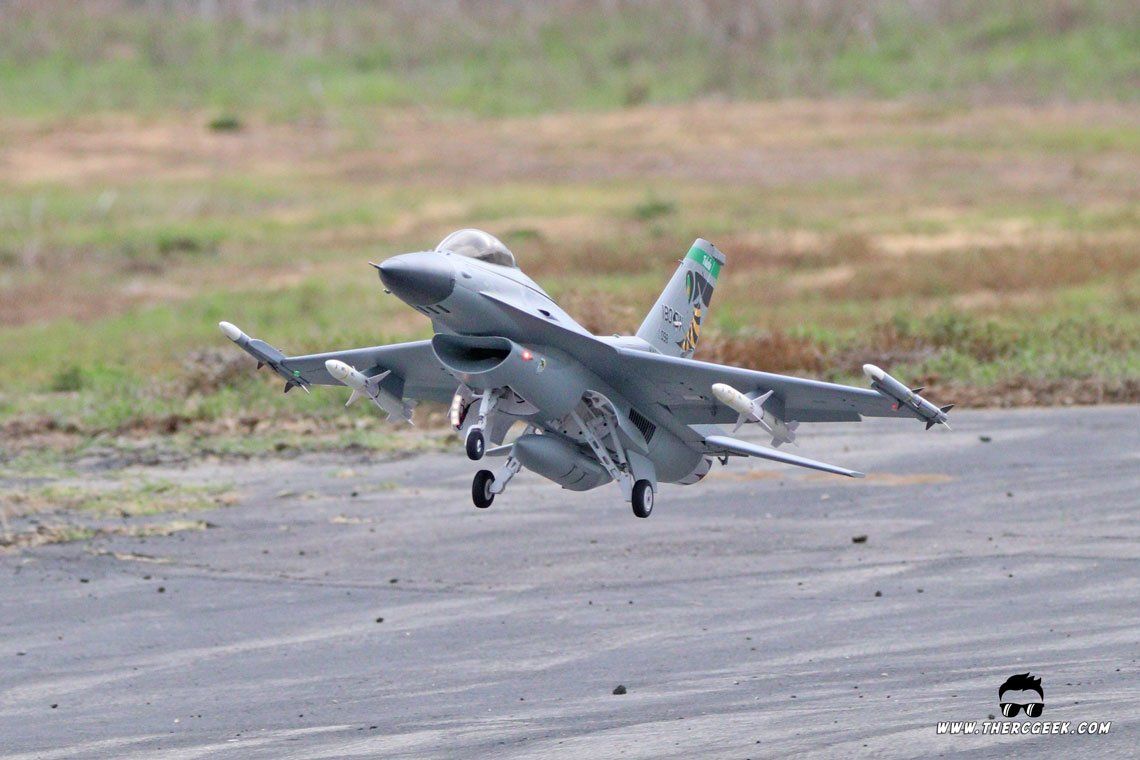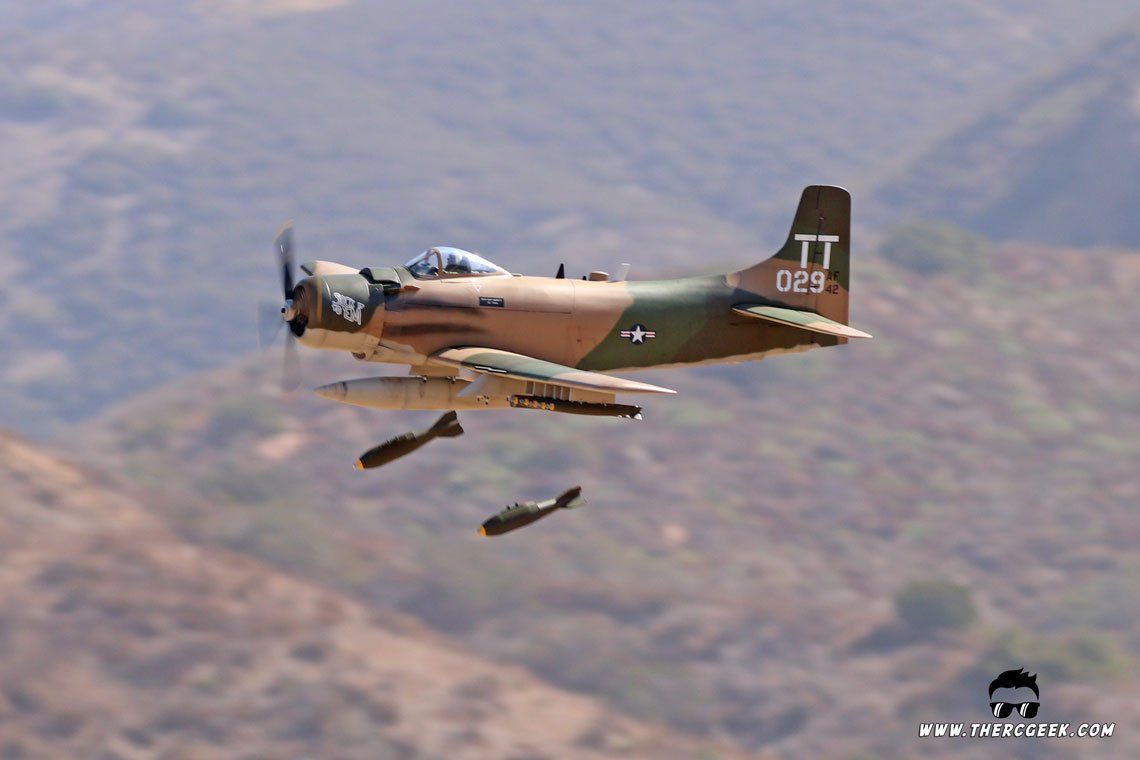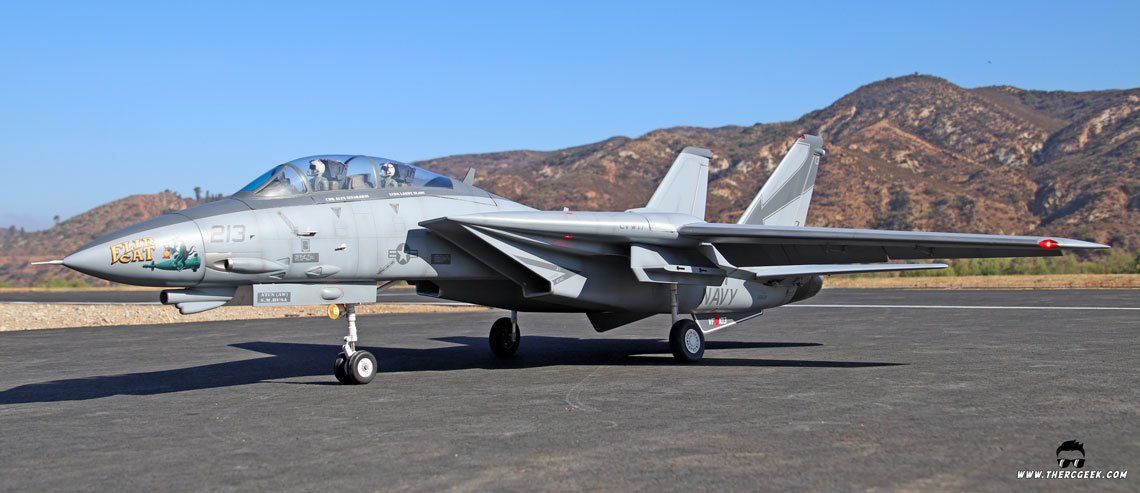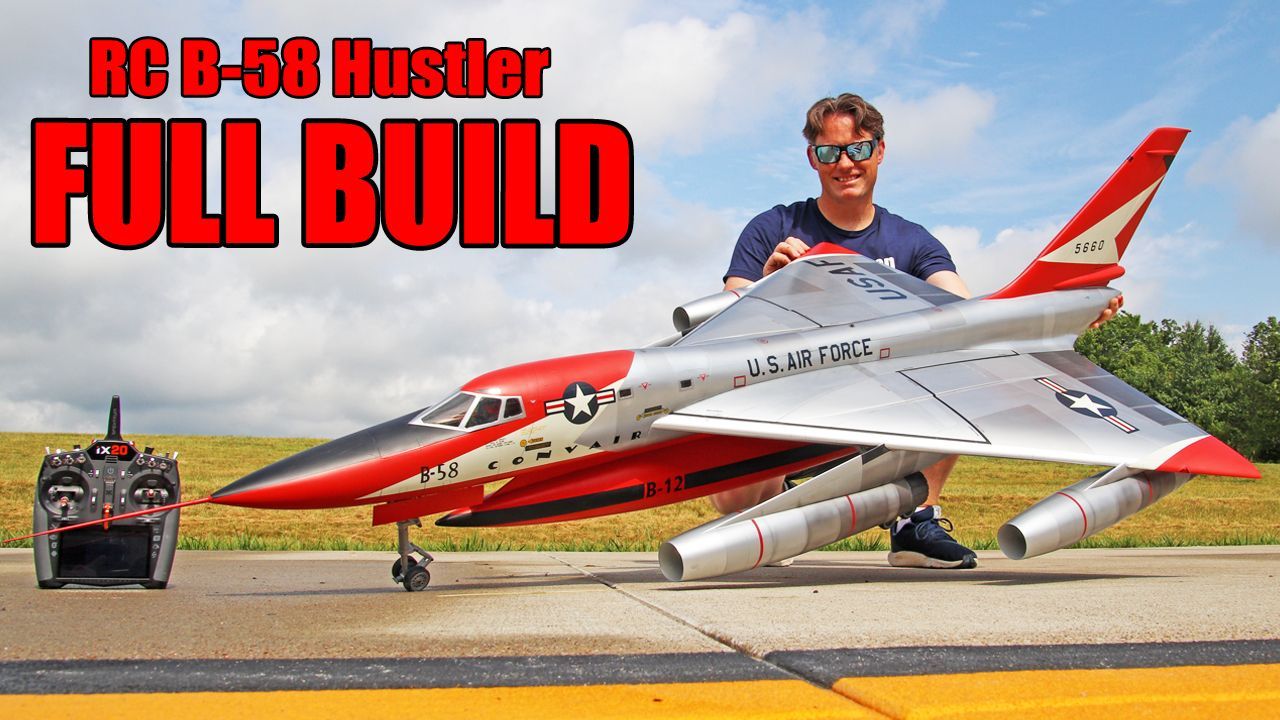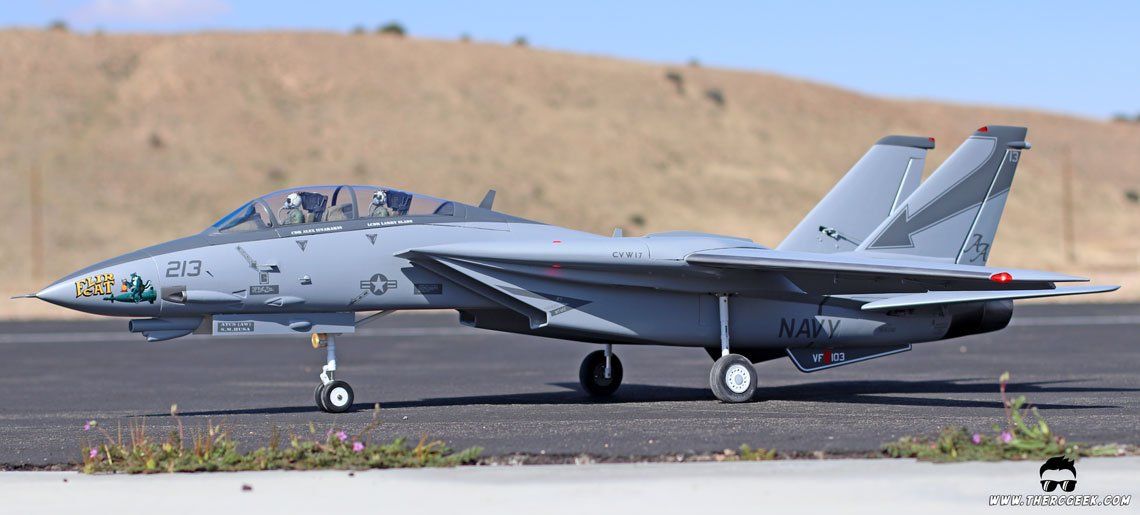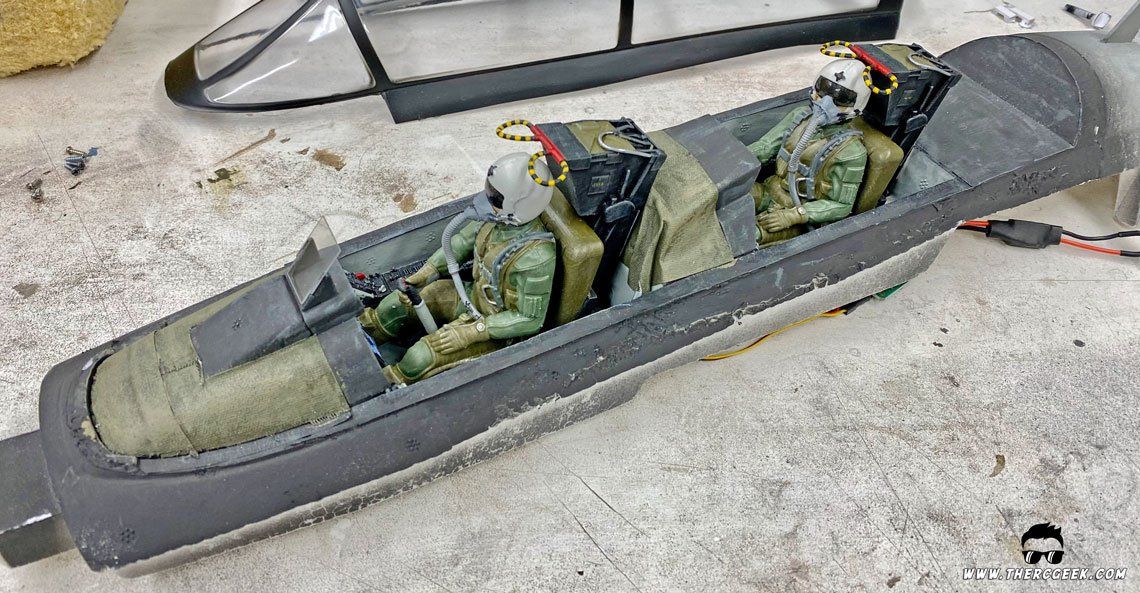The RC Geek Blog
By: Chris Wolfe
When did foam become the new balsa wood?!?
Ever since getting to ride in Ken Wagoners’ Lady Alice P-51, I’ve had to have a P-51 in my hangar and it has to be painted up as Lady Alice! Anything I can do to relive that amazing experience…which of course would mostly consist of me pushing the airplane around my garage while making airplane noises! I wouldn’t have it any other way! If you missed my post and video from that day, you can read about it here. Be sure to check the video too as it was a beautiful day for flying!
So, enter the FMS P-51. I had been shopping around for a P-51 for a while and had been eyeing this foamy for some time. A friend of mine is a master when it comes to foam and I’ve always wanted to use his technique on refinishing a foam airframe. So, when the FMS P-51 came up on sale at MotionRC , I bit the bullet and picked one up. Mostly, I liked the size (able to transport easily in one piece), the outline looked good and it had a cool scale 4-blade prop (though, I upgraded to something better and more scale). Also, you get an all inclusive package with servos, motor and ESC. However, it is indeed EPO foam, and though the finish is nice, you get big panel lines and some foam texture; nothing that can’t be remedied through some elbow grease and the right materials. So over the next few weeks, I will be showing the method I’m using to completely refinish a foam warbird while also showing some of the upgrades done as well.
BUILD REVIEW
As mentioned, the FMS P-51 is an all inclusive package that comes painted and with everything installed. All that’s needed is a battery and receiver and you can be flying in under an hour. However, putting the airframe together I noted a few things both good and not so good. Here’s what I found:
GOOD:
- The airplane assembles quickly and looks decently scale
- The retracts and struts are nicely done and operate properly in a scale manner (inner door closes when the gear are down). The retract mounts are plastic, so we will see how those hold up over time. Flying off of asphalt, I don’t expect any issues.
- The hardware is decent enough, though the clevis’ are plastic, so I’ll keep an eye one them and replace them if necessary in the future (they’ve been flawless on an FMS T-28 I’ve been flying for years)
- The lights are a nice touch for that extra bling (they did miss the white tail light in the rudder though).
- The battery tray is nicely done and makes the battery removable easy while still locking it in place. A 5s 5800 mah battery fits without any issues.
- The stab and dorsal are removable which is nice, but I will be gluing them onto the airframe. It’s only a single screw holding each and with them glued, I can clean up the seams nicely with filler.
NOT SO GOOD:
- The rudder and elevator linkages are secured properly within the airframe and so there’s backlash. The push rods bend when high load is applied to the surfaces. This is no good, especially since we’re upgrading the power system and will be getting higher than stock airspeeds.
- The stock propeller though functional and 4-bladed could be better. The blades are overall too small for scale and could be stiffer. Also, the spinner material and prop attachment could be better. That being said, the stock prop is completely functional (no issues noted from the field) and I would still have used it had I not had another option.
- The wing receiver tubes for the spars were too long out of the box. So as a result, the wing couldn’t be completely pushed together properly. This is easily remedied with a dremel and a sander to sand the receiving tubes back as necessary.
- The panel lines are HUGE! I knew this going in of course, but I’m not sure why they need to be 1/8″ wide valleys on the model.
UPGRADES
There were really only 2 upgrades that I made…
Prop & Spinner
First of all, as noted, the spinner and prop are a bit hokey. Though you get a 4-blade with a scale-ish shape, the diameter and chord are just too small for scale (and that stuff bugs me). Also, the spinner material seems brittle and the attachment and alignment setup for the prop blades leaves a bit to be desired. To remedy this, I upgraded to the AirField prop
and spinner
available at NitroPlanes. The overall shape is much more correct and the prop diameter and blade chord is larger (more scale, woohoo!). Additionally, the overall design is much better in that the prop blade attachment is much more robust and the prop blades themselves are stiffer. Note that to make this work with the FMS motor/prop adapter, a small amount of grinding with a dremel was necessary to clearance for the hex shaped backplate lock.
5s Motor Upgrade
The second upgrade is to upgrade the motor to the FMS 4258-550Kv
motor to run 5 cells. The stock setup is for 4 cells and stock the performance though decent, has room for improvement. So, knowing this, this is an inexpensive upgrade that will notably improve the performance of the airplane. Note that if running more than 4 cells, it is recommended replacing the stock ESC. A Castle Creations Talon 90
will work excellent!
PAINT STRIPPING
Obviously, if you start out with an unpainted airframe (at one time I saw them at Diamond Hobby ), then you don’t have to worry about this. However, if you are refinishing a painted airframe, then the simplest way to remove the paint is using acetone.
 The first item of business is to carefully remove the markings (stickers). I say carefully because we don’t want to accidentally pull foam with any of the stickers. It will lift the paint, but that’s ok since we’re stripping that off anyways. The reason we need to strip the paint is so that we get good adhesion from our finishing materials, otherwise we may run into the issue of our finish lifting up with if the stock finish is left underneath it.
The first item of business is to carefully remove the markings (stickers). I say carefully because we don’t want to accidentally pull foam with any of the stickers. It will lift the paint, but that’s ok since we’re stripping that off anyways. The reason we need to strip the paint is so that we get good adhesion from our finishing materials, otherwise we may run into the issue of our finish lifting up with if the stock finish is left underneath it.
To strip the paint, the process is simple. Soak a paper towel with some acetone and place it onto the surface we’re stripping letting it set for a few seconds. Then, simply wipe it off and the paint will begin to lift up. It takes some time, but is not a hard process. The silver took a little more effort, but the acetone alone still lifts it up. However in the process, I discovered that an adhesive remover from G.R.O.W. Automotive (pictured above) available from my folks ( Jet Hangar Hobbies, Inc. , email or call to order) actually acted as a paint stripper and helped lift the silver up quicker. So, using both of these in combination helped speed up the process. Note that the video at the start of the article shows in detail this process.
Next time we will delve into filling and smoothing out all of the surfaces (in the picture above, you can see I’ve already started on the dorsal). This will give us a nice smooth canvas to then start our process for preparing for paint. Ultimately, we should have a finish that will have a similar look to a fiberglassed airframe (that’s our goal at least!). Good times!
The post How to Refinish a Foam Warbird – Ep1 FMS P-51 appeared first on The RC Geek.
The RC Geek Blog is your place to learn about all aspects of the RC hobby. Learn to build, design, drive or fly that RC project you’ve always wanted to build, but have been intimidated to try. This blog is here to help you on your journey and provide tips and tricks as you go! My hope is to inspire builders both experienced and new! So, welcome, please look around, it’s an exciting beginning! I’m currently documenting my latest competition scale RC jet build, a Mark Frankel F4D Skyray, along with some other fun tips and videos. If you can’t find what you’re looking for on this front page, click on any of the categories to the right and it will show just posts related to those categories. Please feel free to add comments and/or contact me directly if you have questions, I’m here to help! And don’t forget to check out my YouTube Channel, I post new videos every week!
Subscribe To Our Blog Now
